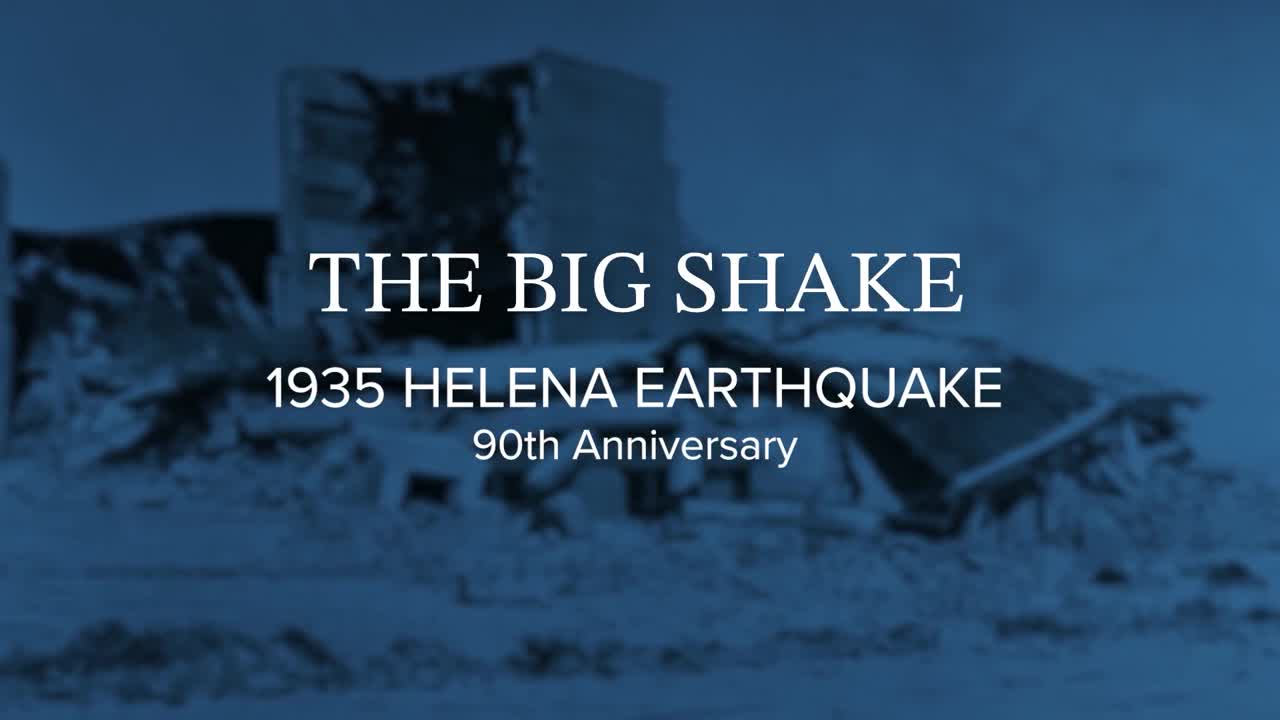Not many people still remember the Big Shake of 1935, but the stories live on through historical documentation and stories shared with children and grandchildren. Here are a few of those stories that viewers shared with MTN.
LaVere “Sis” Southwick was a firebrand of a woman, according to those who knew her, like Barbara Wardell. Southwick was in high school during the fall of 1935. She recalled how impressed she was with the new high school and her disappointment when it was destroyed by the quake. She also recalled how brutally cold the winter was in the railcars the high school temporarily moved into while the school was rebuilt.
Curt Synness’s family owned “The Shanty”, a dance hall located in the Helena Valley. People in the building were prepared to catch the large gas lamps that swung from the ceiling during the quake, worried they might catch the building on fire. The building held up, though the same could not be said for the nearby Montana Deaconess Boarding School, which suffered significant damage. Actor and bodybuilder Steve Reeves, known for his roles as Hercules and Goliath, attended the school at the time. He would later go on to be, for a time, the highest-paid actor in Europe.

When the Synness family heard about the misfortune at the Montana Deaconess School, they opened The Shanty up to the students and staff to stay at while an alternative situation could be figured out. The remnants of the old school still stand on Sierra Road near Rossiter Elementary.
Synness is a retired reporter with the Helena Independent Record. Over the years, he’s spoken with numerous people about the Earthquake of 1935. What stood out to him was their character and resolve to make it through no matter what.
“You're not going to whip me. It's going to take more than that, than an earthquake, you know, to get rid of me. So, just that stick-to-itiveness and, willpower, determination,” said Synness.

Debbie Strandberg’s grandparents, her mother and her uncle lived in Unionville at the time.
“The house was a wood-frame house,” wrote Strandberg. “No running water, had to get it from the well, and an outhouse. When the quake hit, the water table was immediately changed and the well became dry. Due to costs, my Grandfather Little did not want to dig a new well, so my Grandmother Little would take buckets and get water from the creek going past their property. Grandmother had a wood stove with a side arm. The sidearm held about a gallon of water, and was warmed by the wood stove. The warm water was used so they could wash up. After the big quake hit, my Grandfather Little was driving home from work, and an aftershock hit. Grandpa Little witnessed a wall (not sure if it was brick or rock) falling and crushed a person. He wasn't able to help, so he rushed home to ensure his family was okay.”
Rebecca Price’s father was hunting with his brothers on the Little Blackfoot when one of the large tremors happened.
“They didn't get the full brunt of the earthquake but knew something had happened. They cut their trip short and headed home the next day. He also talked about the new high school being ruined and the kids attending school in railroad cars. Additionally, he mentioned that people who lived in the mansions on the west side of town started sleeping in their garages and old carriage houses that fall and winter,” wrote Price.

“The Quake occurred two years before I was born. But I remember pictures my Dad and other family members took of the aftermath...The Deaconess, the Nabisco plant, the new Helena High on North Rodney,” wrote Elizabeth McColgan.
Former Helena Mayor Steve Keim was living on Jackson Street with his family. His father was a pharmacist by trade, but due to the depression, he was working as a night watchman in the 6th Ward.
“I remember standing on the door of our house, and it was very dangerous. Big cracks, and it was a brick house, brick falling off,” said Keim.
Keim’s family split up temporarily following the quake. Catholic nuns took in his mother and sisters while he, his brothers and their father made due in a tent behind their house.
“There was a lot of aftershocks, but we survived that. But my father didn't want us living in that house, and he didn't have any money. We were just falling out of the depression, even though he was a pharmacist,” noted Keim.

Peggy McMahon grew up down the street from Keim and knew their family well. She was nearly four when the big shock hit and remembers the event well.
“There were card tables in the living room, ladies sitting around. They were there for a baby shower,” recalled McMahon. “My brother got to pass the candy around, and that’s what we were doing. And then all of a sudden, the chandelier, it was swinging and the lights went out. Ladies were screaming. So I took Jim’s hand, he was two, and we went and hid in the closet.”




